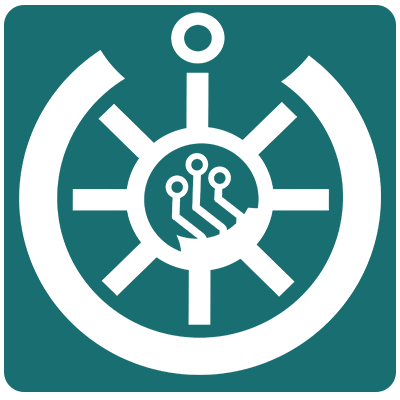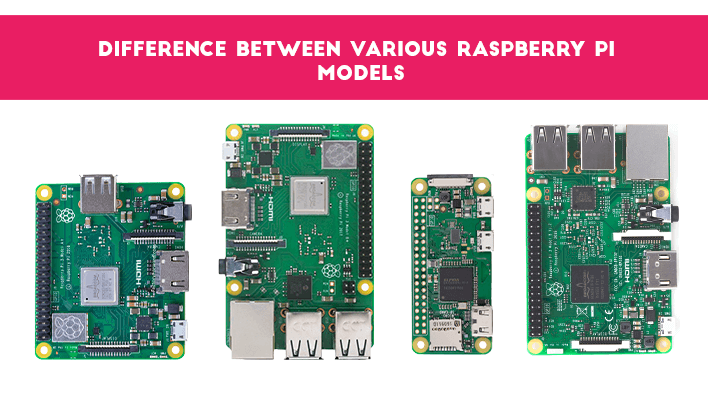The Oku Electronics Blog
Everything We Know About Raspberry Pi 4
21/05/2019 | Okudzeto o. prince
Though the Raspberry Pi Foundation has come out with new products as recently as 2019, the third-gen technology powering them dates back to 2016, which leaves many Pi fans wondering: what’s next? We talked to Raspberry Pi Creator and current CEO of Raspberry Pi Trading (the commerce arm of the foundation) Eben Upton and got the skinny on the Raspberry Pi 4, including details about its potential release date, name and the number of size of the process technology it may use.
Based on Upton’s answers, we can say that the device sounds like it’s still in the planning phase, but the company also has big ambitions for it. Here’s everything we know so far about Raspberry Pi 4.
Release Date: Not Coming In 2019
Pi fans who have been hoping for a new Pi 4 this year will be disappointed to learn that there is no way it’s coming out earlier than 2020.
“I don’t have a route to do something this year,” he told us. “I think we kind of understand what featureset we want [and] what would be involved in getting that featureset. I don’t think we have a defined plan for turning that into a product yet.”
Yes, It Will Be Named Raspberry Pi 4
From Microsoft skipping straight from Windows 8.1 to Windows 10 to Apple jumping from the name iPad to iPad 2 and back to iPad again, the tech world is full of companies that try to obscure the true version numbers of their products. Raspberry Pi is not one of those companies. Upton confirmed that the next-gen Raspberry Pi will indeed be called the Raspberry Pi 4, not something silly like the Pi X or Pi Vista.
“It would be insane not to call it that,” he said.
Improved Speed And Capacity
The most obvious improvements are the ones you’ll definitely see in the Raspberry Pi 4. “I think everyone’s wish list for the product looks the same: more processor, more RAM, faster network [and] faster non-multimedia I/O,” Upton told us.
At present, the Raspberry Pi is limited to a maximum of 1GB of RAM, a 1.4-GHz quad-core ARM Cortex-A53 CPU (on the 3A+ / B+) and a USB 2.0 bus. It almost goes without saying that most Pi fans would like to move up to 2 or 4GB of RAM and be able to attach peripherals that operate over at least USB 3.1 Gen 1, if not USB 3.1 Gen 2. And a faster processor is always a huge plus.
In terms of networking, the best Pi offers now is dual-band 802.11ac and Bluetooth 4.2 support, which is pretty good, but the Ethernet has a maximum speed of 300 Mb/s, because of the USB 2 bus.
No More 40nm
One reason why designing a new Raspberry Pi will take a while: The organization will have to switch from its tried-and-true 40nm CPUs to a smaller process node in order to gain performance.
“What you’ve seen us do with Pi is, with the three and half generations that we’ve done, add progressively larger ARM cores to the side of a basically-fixed 40nm system design,” he said. “We could keep putting larger ARM cores on the side, but what you’d find is that we couldn’t afford the energy involved in toggling all the transistors that are in those cores so you’ve kind of reached a performance maximum for that process node.”
Upton also notes that the current 40nm architecture cannot address more than 1GB of RAM and is stuck with using old-style LPDDR2 memory.
Next Pi Could Be 28nm, Won’t Be 7nm
Upton told us that he and his team haven’t yet decided on a process node. He thinks that going down to 28nm is feasible, but shrinking all the way to 7nm probably won’t work. He explained that it’s difficult to have an affordable 7nm platform that will support 3.3-volt I/O like Raspberry Pi requires.
“On smaller process geometries it gets harder (or at least more costly) to manufacture inputs that can survive having 3v3 applied to them, or outputs that can drive to 3v3,” he explained.
However, the final process node could be somewhere between 28 and 7nm.
Pi Zero Has Its Own Dev Schedule
The Pi Zero and Zero W might be the best deals in tech. These stick-sized Raspberry Pis have enough processing power to do real work, but they are much more compact and cheaper than the A or B series models. At Micro Center in the U.S., you can even get the Zero W, which has built-in 802.11n Wi-Fi, for just $5. However, the Pi Zero and Zero W have the same, single-core processor as the original Pi 1 that came out in 2012, and they sport just 512MB of RAM.
Unfortunately, upgrading the Pi Zero is fairly complicated so a new version of it likely won’t come out along with the Raspberry Pi 4. And, whenever the Pi Zero line does get an upgrade, it is unlikely to get a bump to the same 4x Cortex-A53 processor that’s now on the Pi 3 series. The problem is that there’s not enough space.
“Because you have that form factor constraint . . . the RAM is popped on top of the processor,” he said. “You have 168 balls in two rings around the outside. So you think about a 12×12 package with a mil chewed off each side and you have a 10 mm cavity and it’s not possible because of the way we’ve built the silicon for Pi 2 and Pi 3; we did it by stretching the die horizontally, putting larger ARM cores on the side. That means that you can’t fit that into a poppable cavity so we don’t have a route to do a high-ARM performance pop design.”
However, there will be Zero updates of some kind in the future. Upton noted that it is a very popular product and the company wants to find a way to upgrade it at some point.
The Pi 4 Will Cost $35 U.S.
Ever since it launched in 2012, the Raspberry Pi has aimed for and achieved a price of no more than $35. Through several years and generations, the top-of-the-line Pi has always had an MSRP of $35 U.S or a similar amount in pounds (currently £34 for the Pi 3B+). Upton says that the company should maintain this price for the Pi 4, despite some changes in the value of money over time.
“Although it’s $35, it’s $35 deflating dollars,” Upton noted. “I think $35 in 2012 is about $38 now. It’s really insidious because we don’t have very high inflation at the moment, but it’s kind of an insidious crunch that that $35 is going through every time.”
Size: No Larger Than Pi 3B+ Or Smaller Than Zero
One of the good things about Raspberry Pi in all of its form factors is that it’s fairly compact and easy to fit into project boxes and other enclosures. Even though it should be more powerful, Pi 4 shouldn’t be physically larger than today’s 3B+.
“The original form factor is a credit card. That’s the original. Our anchor point is the size of a credit card . . . I can’t imagine wanting to up, because we don’t have any more interface I want to fit around the outside of the product,” Upton said.
On the other hand, the Raspberry Pi Trading Ltd. CEO doesn’t see much room for a smaller board than the Pi Zero, because he doesn’t want to lose any of its current group of ports. The Pi Zero and Zero W have a microSD card reader, two micro USB ports, mini HDMI out, a camera connector, and 40 GPIO holes.
“I can’t imagine us going down from Zero, because you have to throw away if you go around the edge of the board . . . you’d have to throw away something that we kind of care about quite badly in order to get there,” he said. “You might be able to make Zero a little smaller by going back to the old 26-pin connector on the top rather than the 40-pin but that seems like that would throw away a lot of the compatibility with things we care about.”
USB Type-C? Maybe For The Power
Most new phones and many new laptops and tablets now use USB Type-C for charging, because this standard carries a lot more electricity and data than the old micro B connector that supplies power to every model of Raspberry Pi. Upton told us that he is considering using Type-C for power, but isn’t impressed with its durability and doesn’t see it as necessary for other uses (data or video).
He noted that, with regular Type-C (not USB PD), you could get 3 amps of power, a marginal improvement over the 2.5 amps the micro USB port on the Pi gets now. With that extra power, the Pi could distribute more power out to peripherals, but the designers would have to deal with extra heat from that extra electricity.
However, Upton doesn’t think the Type-C connector is rugged enough for many users.
“There’s some awkward decisions in the pin choice on the [USB-C] connector,” he said. “In the kind of fairly-rugged environment that people use Pi in, if the connector gets twisted or it gets dust in it, you can end up exposing the high-speed differential pairs on that connector to rather high voltages,” he said.
Overall, it sounds like Upton is happy with the current suite of ports on the Pi 3B / 3B+, which includes full-size HDMI-out, four full-size USB Type-A ports, Ethernet and micro USB charging.


